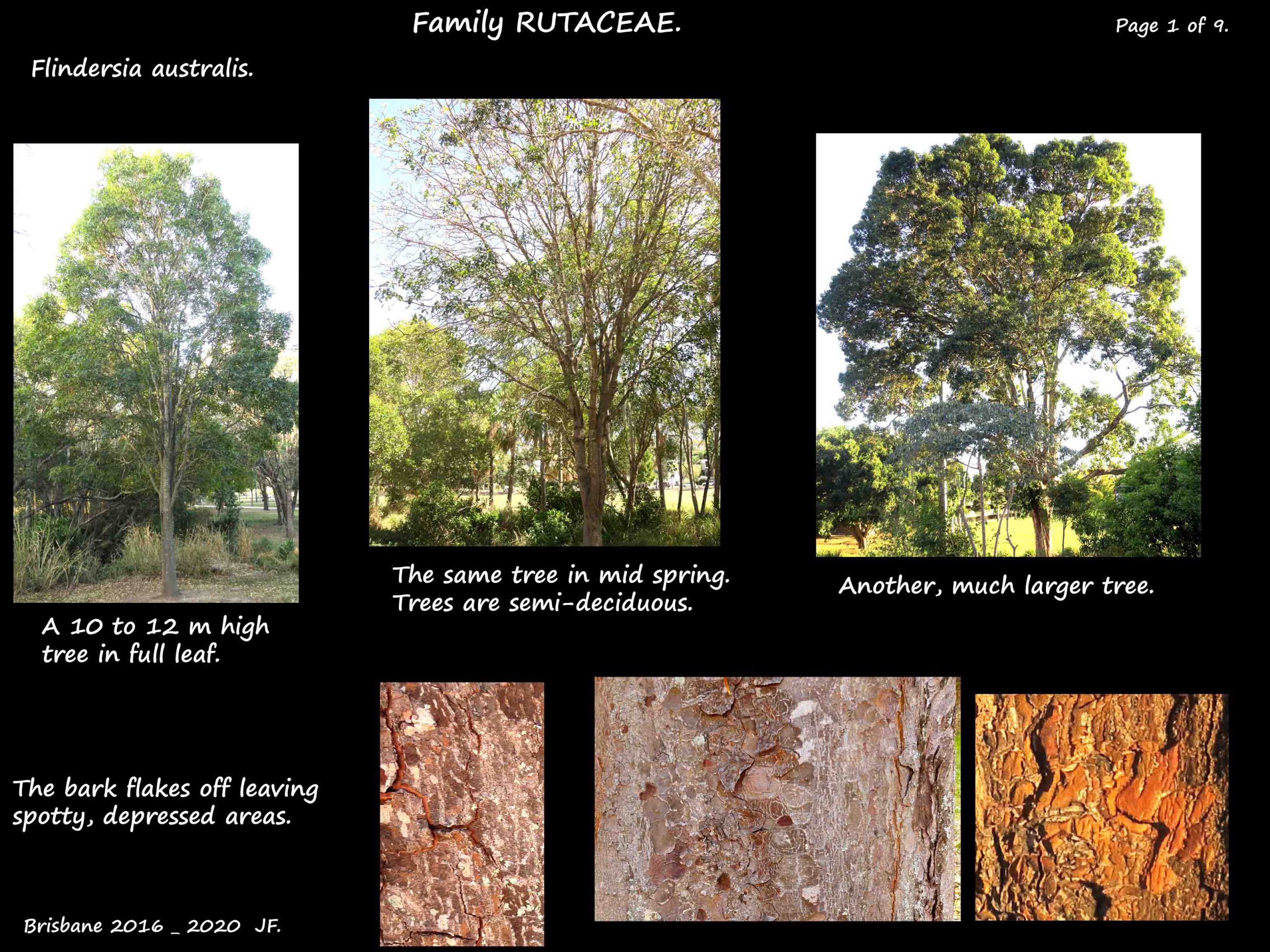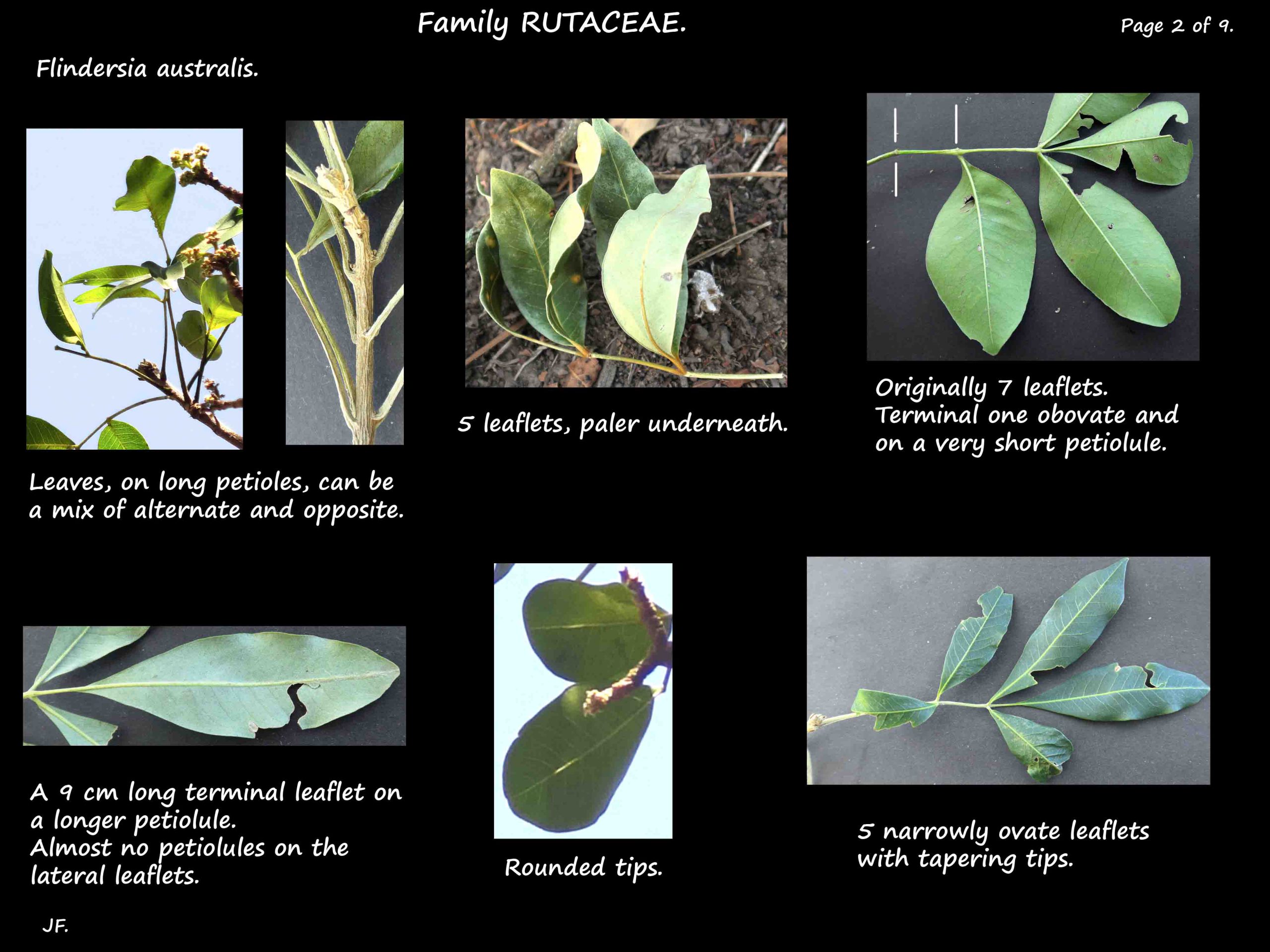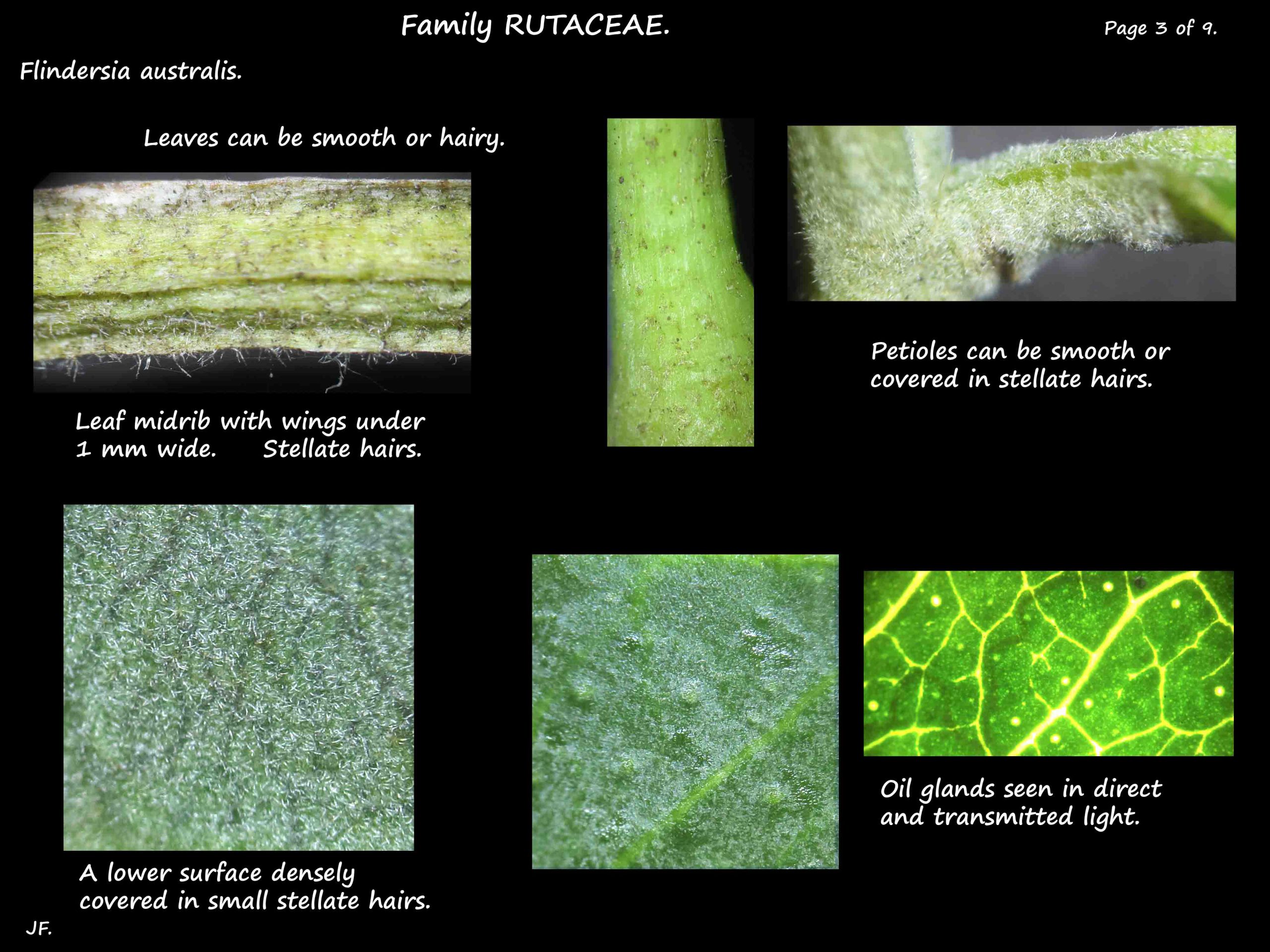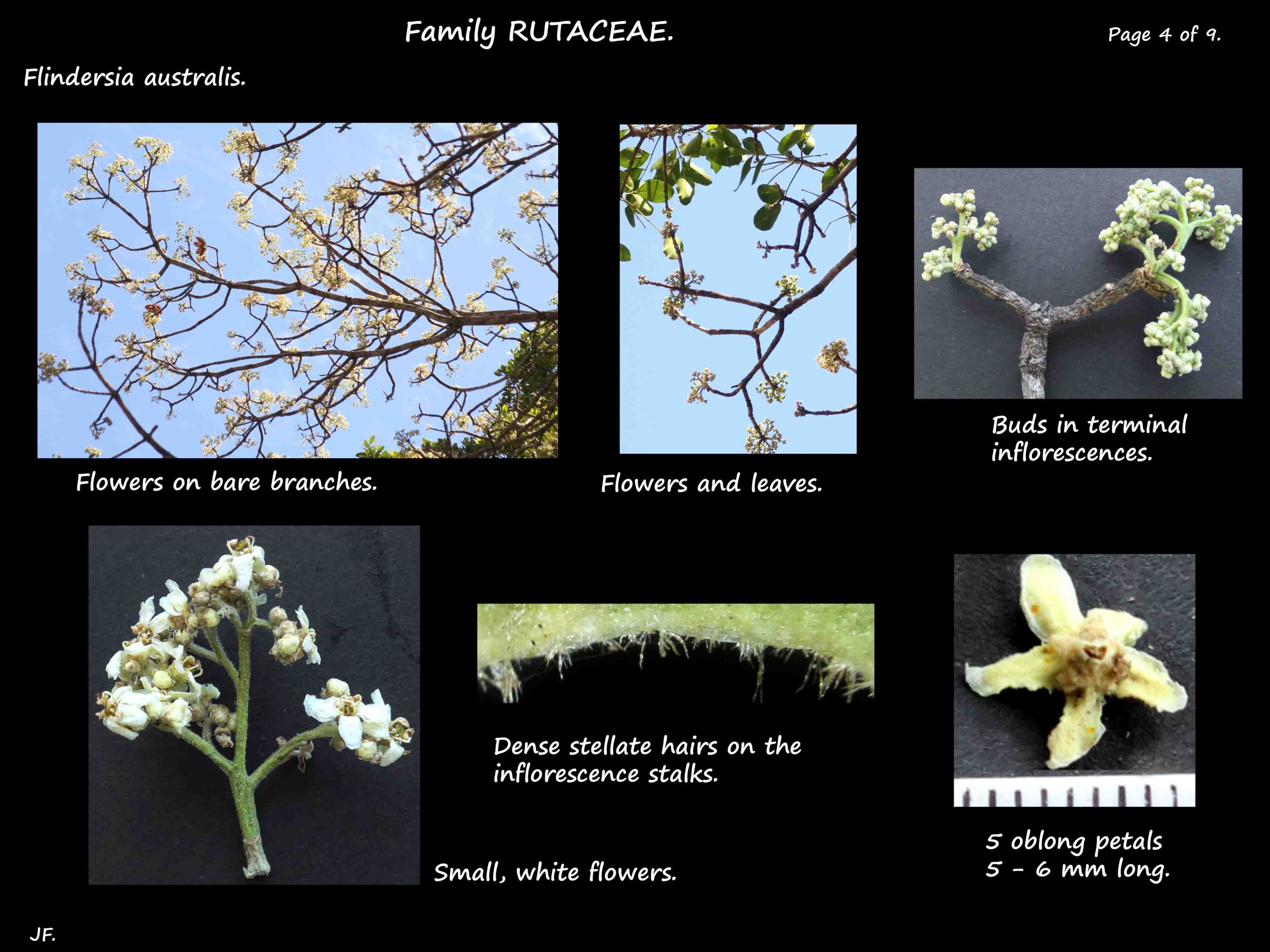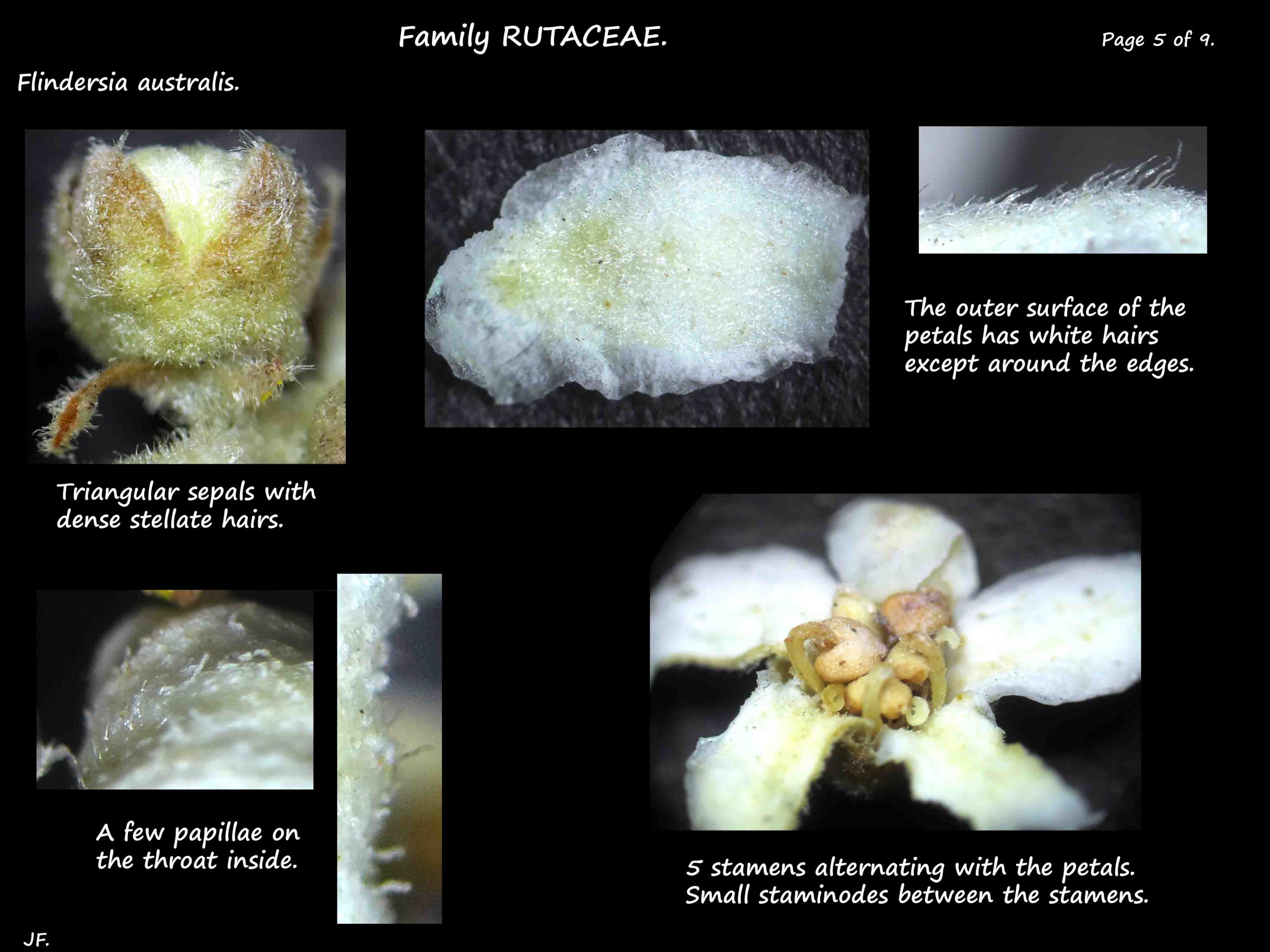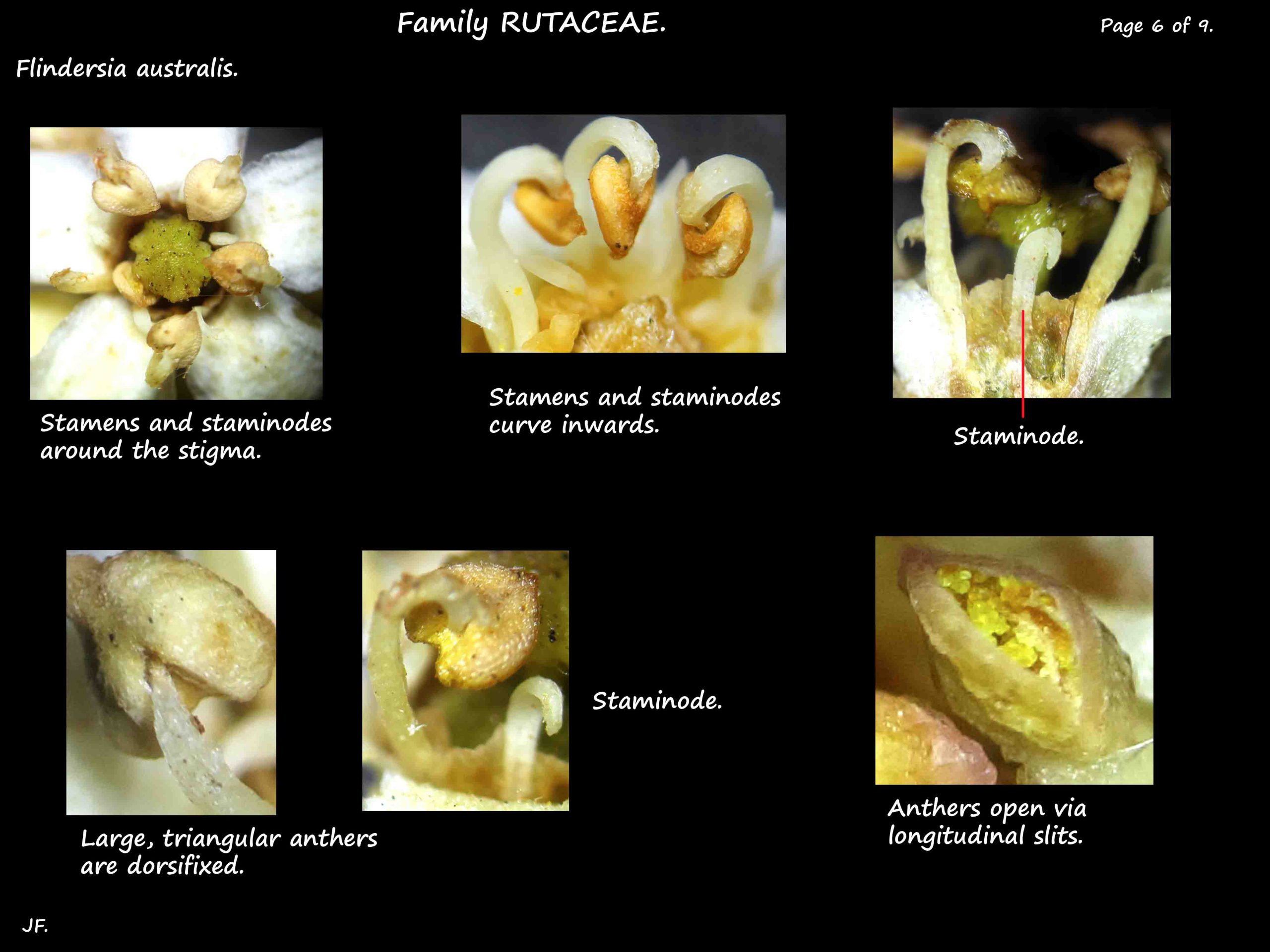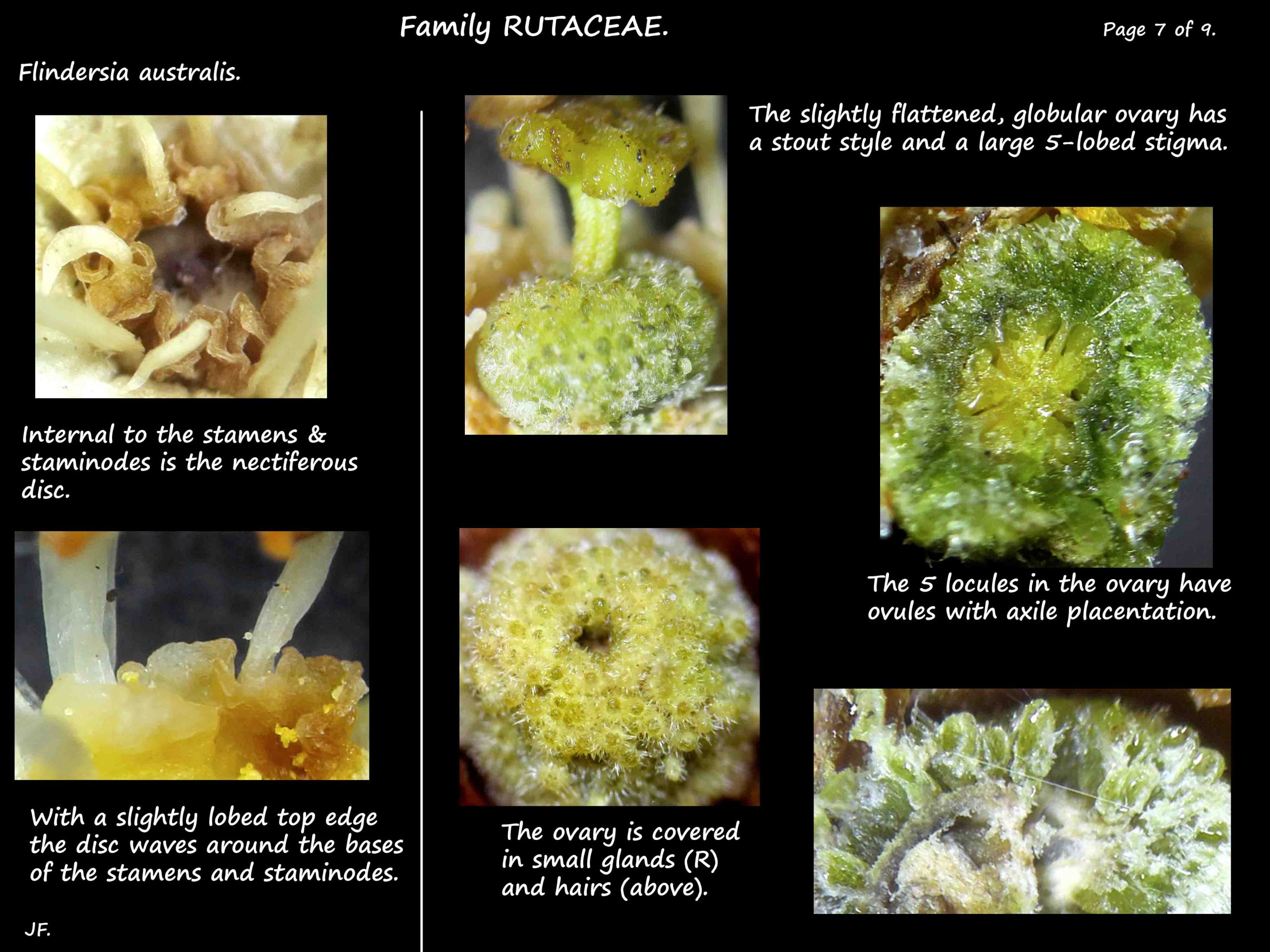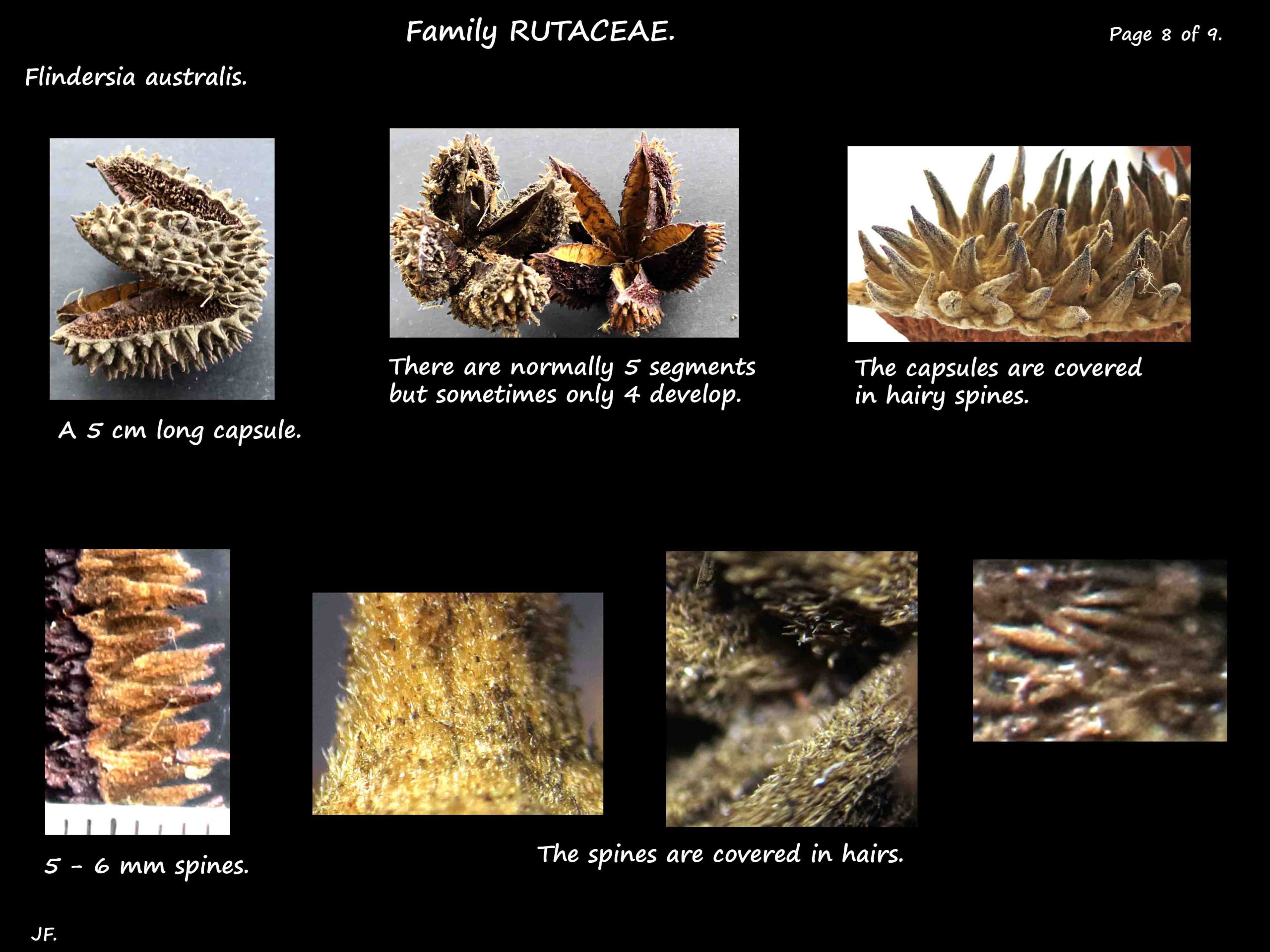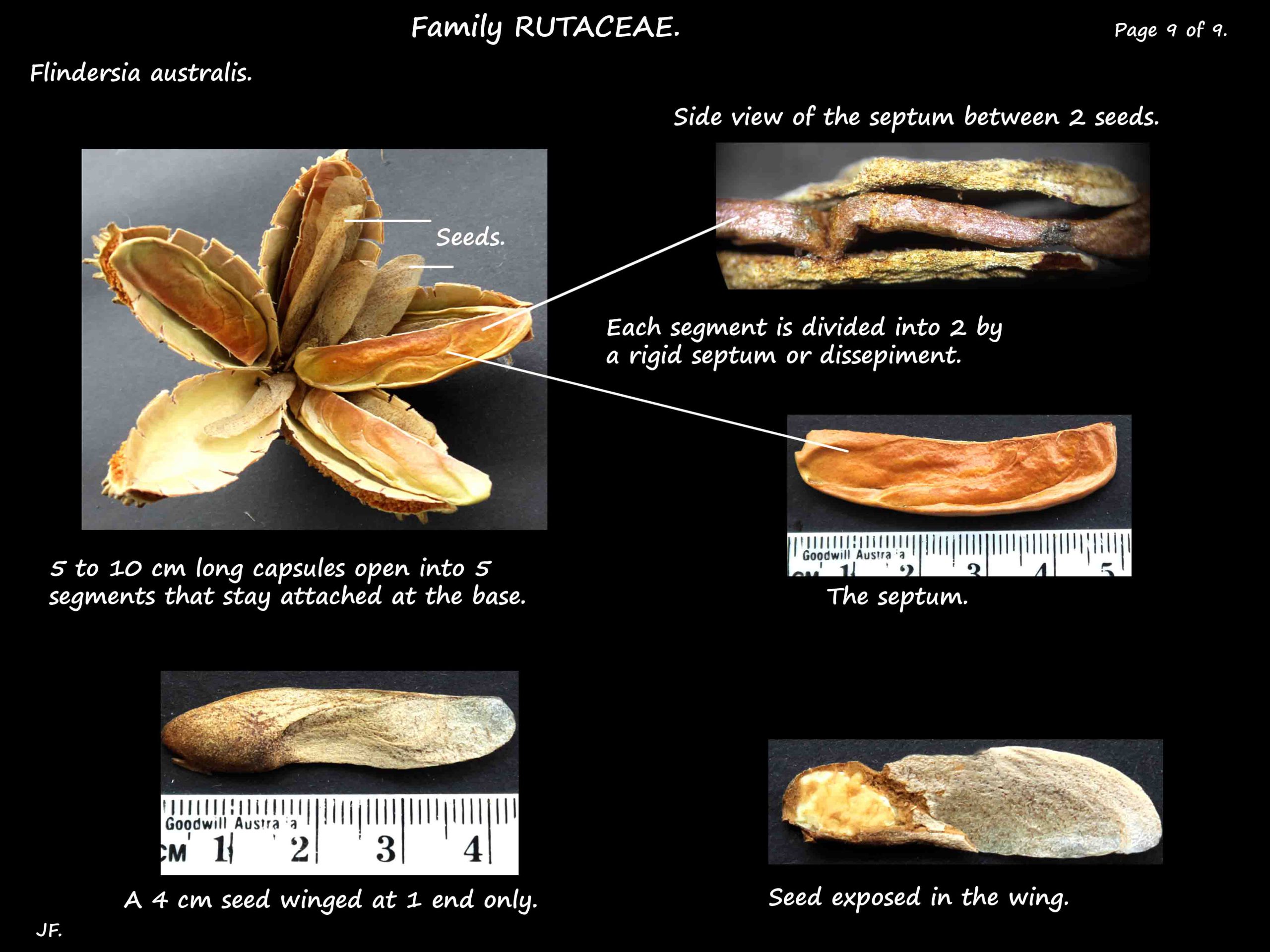Flindersia australis.
In Family Rutaceae the Australian Teak is common in Queensland.
It is seen in Brisbane as a street tree or in parks.
Trees can grow to 40 m high but are more commonly seen around 15 to 25 m.
They are semi-deciduous and older trees have buttressed roots.
When the scaly brown bark flakes off it leaves spotty, slightly depressed areas.
The simple or stellate hairs on young branches are eventually lost.
The pinnate leaves are alternate but may also be opposite.
The compound leaves, concentrated at the branch ends are up to 34 cm long.
The petiole is 10 to 15 cm long.
The upper surface of the midrib is flattened with sharp angles or 1mm wings at the sides.
There are 1 to 6 opposite pairs of lateral leaflets and a terminal one – 3 to 13 leaflets.
Most commonly seen are leaves with 5 to 9 leaflets.
Leaflet stalks (petiolules) vary from nil on all leaflets to 3 mm on the lateral ones
and 3 cm on the terminal leaflet.
Leaflets are variable in shape – ovate, obovate or elliptic.
They are mostly from 3 to 12 cm long by 1.5 to 4 cm wide.
The tips can be round to pointed and the base rounded, asymmetric or wedge-shaped.
Leaflets may be hairless or have sparse to dense stellate hairs especially on the lower surface.
There are prominent oil dots over the whole leaflet.
Inflorescenses are erect, branched clusters up to 15 cm long.
They can be terminal or in the near terminal axils.
They may appear when many or all the leaves have fallen.
The bisexual, cream to white flowers are typical of Flindersia with parts in 5’s.
The triangular sepals, around 2.4 mm long, are densely hairy outside.
The oblong petals, around 6 mm long, have dense hairs outside and a few on the throat inside.
There are 5 stamens and 5 staminodes all curving inwards.
There is an annular nectiferous disc.
The 5 locule, hairy ovary has a single style and stigma.
Fruit are woody, round or ellipsoidal capsules from 5 to 10 cm long.
They open, into 5 segments (valves), from the top but stay attached at the base.
The 2 to 10 mm high tubercles or spines on the outside are covered in small hairs.
Each segment, representing 1 carpel, is divided into two by a septum.
There are 2 or 3 seeds on each side of the septum.
The flattened seeds, 3 to 4.5 cm long, only have a wing at one end.
J.F.
